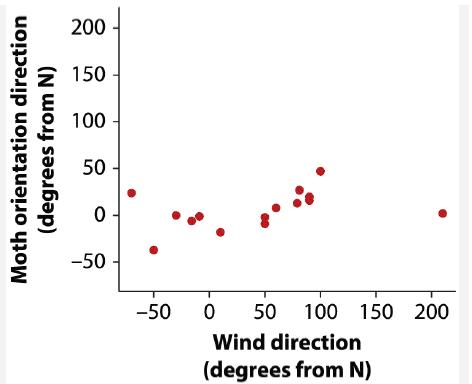African armyworm moths often migrate long distances in large numbers, devastating crops along the way. The direction
Question:
African armyworm moths often migrate long distances in large numbers, devastating crops along the way. The direction of their movement is often downwind, raising the question of whether the moths orient to the wind direction. Reynolds et al. (2016) reported measurements of moth orientation during separate migration events. For each event, they recorded the direction of wind flow, measured as deviation from North in degrees (positive numbers indicate deviations to the East and negative numbers deviations to the West). They also recorded the average direction of the moths’ orientation of their body axis, again measured in degrees from the North. Does orientation direction correlate with wind direction? The data below are the wind direction and mean orientation for 15 separate movement events. A scatter plot with both axes drawn to the same scale is also provided.


a. Based on the scatter plot, which is more variable: wind direction or moth orientation direction?
b. What is the correlation between wind direction and orientation in the sample?
c. Is there evidence that this correlation differs from 0?
Step by Step Answer:

The Analysis Of Biological Data
ISBN: 9781319226237
3rd Edition
Authors: Michael C. Whitlock, Dolph Schluter





